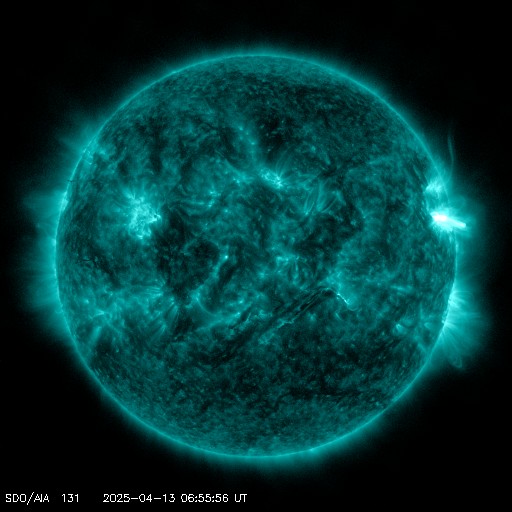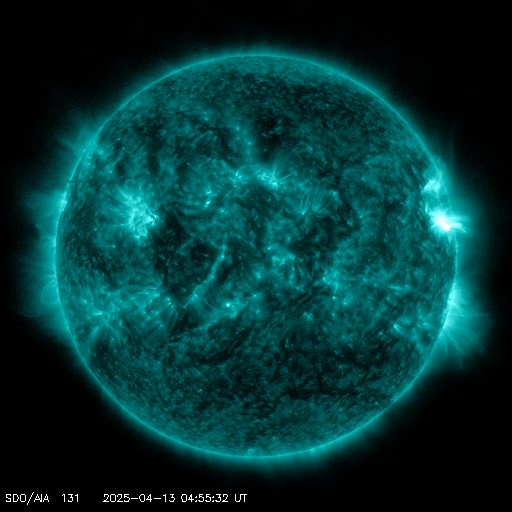Het archief bekijken van woensdag 5 februari 2014
Dagelijks bulletin over zonne- en geomagnetische activiteit van het SIDC
Datum verslag: 2014 Feb 05 1313 UTC
SIDC Prognose
Zonnevlammen
Active (M-class flares expected, probability >=50%)
Geomagnetisme
Quiet (A<20 and K<4)
Proton Flux monitor
Warning condition (activity levels expected to increase, but no numeric forecast given)
| 10cm flux | Ap | |
|---|---|---|
| 05 Feb 2014 | 186 | 004 |
| 06 Feb 2014 | 184 | 004 |
| 07 Feb 2014 | 180 | 014 |
Bulletin
Catania sunspot group 28 (NOAA AR 1967) stopped growing, and produced only one M-class flare in the past 24 hours (M1.5 flare peaking at 16:02 UT yesterday). Catania sunspot group 27 (NOAA AR 1968) produced only C-class flares, but exhibited the emergence of new magnetic flux and new sunspots this morning. These two groups keep respectively beta-gamma-delta and beta-gamma configurations of the photospheric magnetic field. We expect further flaring activity on the C- and M-level in these two groups, with an X-class flare being possible but unlikely. Due to the position of both sunspot groups still close to the solar central meridian (around 20-30 degrees from it), a CME associated with a flare in these active regions may arrive at the Earth. A major CME in one of these sunspot groups may lead to a proton event due to their position in the western hemisphere, so we maintain the warning condition. A weak partial halo CME first appeared in the SOHO/LASCO C2 field of view at 16:36 UT yesterday. It had the angular width of around 240 degrees and the plane-of-the-sky projected speed around 500 km/s. It was associated with the above-mentioned M1.5 flare in the Catania sunspot group 28 (NOAA AR 1967), a post-eruption arcade in its western part, and weak coronal dimmings. We expect at most the arrival of the CME-driven shock wave at the Earth, on February 8, most probably without strong geomagnetic consequences (K = 4 at most). Another partial halo CME (first appearing in the LASCO C2 field of view at 19:48 UT, angular width around 130 degrees) is a far side event (with the source region around S20W170 as seen from the Earth). A narrow coronal hole extended in latitude from the equator to approximately N60 reached the solar central meridian late yesterday evening. We expect the fast flow from this coronal hole to arrive at the Earth late on February 7 (see below). The Earth is currently inside a slow (around 350 km/s) solar wind flow with anomalously high (around 10 nT) interplanetary magnetic field magnitude. The source of this high magnetic field is not clear at the moment. Due to the low solar wind speed, we expect quiet geomagnetic conditions. Late on February 7 we expect the arrival of the fast flow from the extended coronal hole (see above), resulting in active (K = 4) geomagnetic conditions.
Het geschatte internationale zonnevlekkengetal (ISN) van vandaag: 122, gebaseerd op 15 stations.Zon indexen voor 04 Feb 2014
| Wolfgetal Catania | 183 |
| 10cm zonneflux | 188 |
| AK Chambon La Forêt | 006 |
| AK Wingst | 004 |
| Geschatte Ap | 003 |
| Geschat internationaal zonnevlekkengetal | 108 - Gebaseerd op 20 stations |
Overzicht opvallende gebeurtenissen
| Dag | Start | Max | Einde | Locatie | Sterkte | OP | 10cm | Catania/NOAA | Soorten radio-uitbarstingen |
|---|---|---|---|---|---|---|---|---|---|
| 04 | 1525 | 1602 | 1649 | S12W12 | M1.5 | 1N | 28/1967 |
Aangeboden door het Solar Influences Data Analysis Center© - SIDC - Verwerkt door SpaceWeatherLive
Alle tijden in UTC
<< Keer terug naar de dagelijkse overview pagina
Op basis van de huidige parameters is er in de nabije toekomst een beperkte kans op poollicht op de volgende locaties van de hoge breedtegraad
Whitehorse, YTAnchorage, AK, Fairbanks, AK, Juneau, AK
Laatste nieuws
Laatste forumberichten
Steun Poollicht.be!
Om ook bereikbaar te blijven bij grote poollichtkansen hebben we een zware server nodig die alle bezoekers aankan. Doneer en steun dit project zodat we online blijven en je geen enkele poollichtkans mist!

Laatste alerts
10:15 UTC - Zonnevlam
Matige M1.41 zonnevlam
09:54 UTC - Radio blackout
Kleine R1 radio blackout gedetecteerd (≥M1 - momenteel: M1.08)
07:12 UTC - Zonnevlam
Matige M1.02 zonnevlam
06:54 UTC - Radio blackout
Kleine R1 radio blackout gedetecteerd (≥M1 - momenteel: M1.02)
05:12 UTC - Zonnevlam
Matige M2.31 zonnevlam
Ruimteweer feitjes
| Laatste X-klasse uitbarsting | 28/03/2025 | X1.1 |
| Laatste M-klasse uitbarsting | 13/04/2025 | M1.0 |
| Laatste geomagnetische storm | 06/04/2025 | Kp5 (G1) |
| Zonnevlekkenloze dagen | |
|---|---|
| Laatste zonnevlekkenloze dag | 08/06/2022 |
| Maandelijks gemiddeld zonnevlekkengetal | |
|---|---|
| maart 2025 | 134.2 -20.4 |
| april 2025 | 136.4 +2.2 |
| Afgelopen 30 dagen | 134.7 -7.2 |





